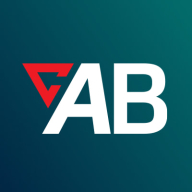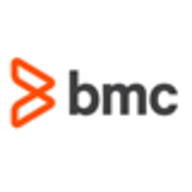


Find out what your peers are saying about BMC, Broadcom, JAMS Software and others in Workload Automation.
| Product | Market Share (%) |
|---|---|
| Control-M | 19.1% |
| Automic Automation | 8.1% |
| ActiveBatch by Redwood | 2.7% |
| Other | 70.1% |



| Company Size | Count |
|---|---|
| Small Business | 10 |
| Midsize Enterprise | 13 |
| Large Enterprise | 44 |
| Company Size | Count |
|---|---|
| Small Business | 19 |
| Midsize Enterprise | 14 |
| Large Enterprise | 66 |
| Company Size | Count |
|---|---|
| Small Business | 24 |
| Midsize Enterprise | 12 |
| Large Enterprise | 112 |
ActiveBatch by Redwood enhances efficiency with features like job scheduling, integration, and real-time monitoring. It supports diverse platforms, automates tasks, and offers a single-pane view with robust security.
ActiveBatch streamlines automation by offering drag-and-drop functionality, pre-built job steps, and native integrations. Its customizable workflows and alert system aid in managing complex workloads like data processing and server monitoring across hybrid environments. While it effectively reduces manual errors and enhances productivity, areas like navigation and support for cloud platforms need enhancement. New users may face challenges due to its complexity and steep learning curve, and further improvements in reporting, mobile access, and training could provide additional support to users.
What important features does ActiveBatch offer?In finance, ActiveBatch is implemented for orchestrating batch processes and data management. The healthcare industry utilizes it for automating patient data updates and server monitoring, while the retail sector benefits from file transfers and inventory management automation.
Automic Automation offers a web-based GUI for high scalability and flexibility, integrating with platforms like SAP and Oracle. It promotes efficient process automation and supports multiple OS environments, benefiting diverse industries with its robust predictive capabilities.
Automic Automation facilitates process automation and workload management, providing valuable integration with applications like SAP and Oracle. It supports a wide range of operating systems and environments, enabling seamless workflow automation. It features a web-based interface accessible across devices, ensuring scalability and flexibility for complex job automation. Users find its predictive capabilities and platform support instrumental in enhancing operations, although improvements are noted in reporting, cloud integration, and documentation. Licensing and pricing structures also present room for optimization, along with workflow dependency management and smoother upgrade paths.
What are the key features of Automic Automation?Automic Automation sees implementation in industries like banking, finance, and telecommunications, where it automates ERP systems, schedules batch jobs, integrates workloads, and manages file transfers. By supporting SAP, Oracle, and ETL tasks, it aids efficiency and workload automation across varied environments including cloud and mainframe systems.
Control-M by BMC is engineered to manage hybrid cloud workflows, offering orchestration capabilities starting at $29,000 annually. Aimed at helping growing teams, it efficiently supports cross-environment scheduling and automation needs.
Control-M offers robust cross-platform scheduling, automation, and integration with applications such as SAP and Informatica. Users appreciate its ease of use with a graphical interface, centralized management, and monitoring capabilities. Advanced features, including Managed File Transfer, automated error handling, and real-time alerts, enhance productivity. The ability to unify workflows and support diverse environments makes Control-M a trusted tool in many sectors. While improvements in reporting flexibility and API integration with tools like ServiceNow are needed, addressing performance issues during upgrades could enhance its value. Offering improved support for new technologies and cloud environments is beneficial, with cost-effectiveness being a consideration.
What are the key features of Control-M?Control-M is leveraged in industries like finance for enterprise scheduling and data management, supporting mainframe, Linux, Unix, Windows, and cloud platforms. It contributes to workflow orchestration and workload automation, improving operational efficiency and enhancing IT infrastructure across those environments.